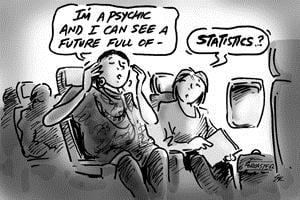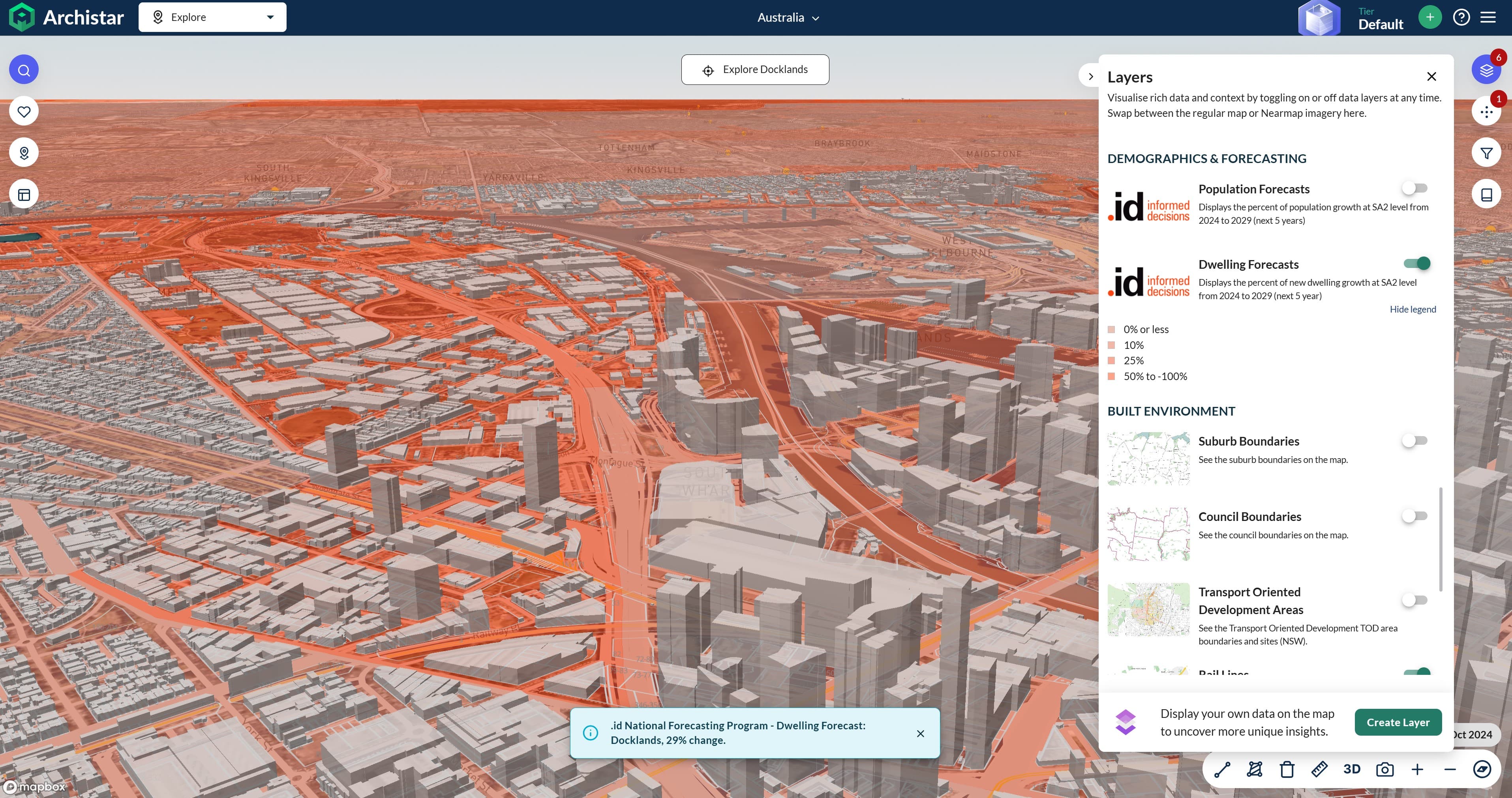Many of us at .id are fortunate to travel to various corners of the country to visit and meet with clients. Not only does this enable us to get to know the places for which we prepare profiles, atlases and forecasts, but travel is a great medium for broadening the mind. On a recent flight back from Perth I sat next to a psychic. Yes, that’s right – a psychic. Right up front I’ll admit that I was skeptical, but my curiosity got the better of me and I started asking questions – after all – I had three hours to kill. And I like to think that I have an open mind about these things. I mean, I’m in the business of forecasting as well – so do psychics and population forecasters have anything in common?

Assumptions drive our forecasts
The key to understanding the population and household outcomes from our forecasts is that they are underpinned by a set of assumptions. They are NOT predictions. I don’t have a crystal ball on my desk – I use Excel and MapInfo all day! We feed our assumptions into a model that then produces an outcome. A good forecast will have assumptions that have its basis in reality eg by considering the evidence base. The way we treat fertility rates for example is to examine recent trends, particularly at smaller levels of geography, and make a determination as to their likely direction in the future. For example, although Australia is recording record numbers of births, fertility rates appear to have plateaued in the last few years after relatively significant gains earlier in the 2000s. It would take a brave forecaster to assume much more of an increase in the future, simply because the societal conditions that created the last baby boom in the 1950s and 1960s are unlikely to be replicated. Then again, you never know, but the evidence isn’t there at the moment. However, it’s all part of the job in keeping up with the latest trends and figuring out how they fit into the overall picture of societal change and how that impacts on urban and regional change. We need to do this in order to put a framework around our assumptions for the many and varying councils for which we prepare forecasts.
How does the psychic operate?
One of the first questions I asked my psychic traveller was how he “sees” the future. I don’t understand this stuff because if I could see the future, I reckon I’d be making a lot of money on Tattslotto tickets. Is it about a feeling, instinct, or are there visions? My psychic traveller said it was more about visions, and that he didn’t totally understand how it happened, but that he’d always been able to see the future. This certainly doesn’t happen in the .id forecasting world. The closest thing I see to that is strategic planning documents with vision statements about a potential future, eg a masterplan for a new development. There are many examples of large strategic development sites in Australia’s cities, some with thousands of dwellings involved – Docklands is probably the best example but there are more recent ones such as the Burswood Peninsula in Perth. But do these vision statements bear out in the real world? Some would argue that Docklands is an almighty failure, being poorly planned at street level and having little sense of community. From a forecasting perspective, I find the issue with some of these vision statements is their unrealistic timeframes – just how do they think thousands of dwellings in high rise apartments are going to be delivered in a 10 year time frame? They certainly don’t seem to consider realities such as the complexity of the planning system, competition from multiple development fronts, and the availability of finance, especially in a post GFC world.
So are there any commonalities?
Aside from the interest in a possible future – not really. Unlike the psychic, I’m lucky that I understand how my population and housing outcomes occur, and what happens if I change the assumptions underpinning the forecasts. I often cite the example of how we treat new dwellings in terms of household type. In a new inner city high rise, I could fill all the apartments with large family households. This would produce a large population due to the large household size, but of course, it’s not that realistic. They are more likely to be occupied by small households such as couples or lone persons, therefore producing a smaller population than if they were all families. And for whatever reason, inner city high rises, once complete, seem to take a while to become fully occupied (if ever due to turnover of rental stock). This means we need to consider the vacancy rate and its impact on the rate of household formation.
The psychic did tell me that the visions he sees enables people to change their future. I was definitely intrigued by this as it reminded me of how the future was changed in Back to the Future 2 when Biff Tannen got hold of the sports almanac that allowed him to make some very sure bets and make a lot of money (OK I’m allowed at least one pop culture reference!). Are we meant to change our future, or are we resigned to a certain fate? Do our population forecasts allow councils to change their future? The power of a population forecast is that enables councils to see the future outcomes of their housing and other policies. If the population outcome is not desirable, then it gives councils an evidence base to support changing those policies. We certainly give them the evidence base upon which to undertake future service planning, but again, the assumptions need to be based in a reality to enable that to happen. The feedback process allows our clients to suggest changes that we can incorporate into the assumptions, and on the whole we do this, and of course this changes the outcome. But these generally involve changes to the number of dwellings, or the timing on a particular development, not someone’s future life. We also have the distinct advantage of revisiting our assumptions every two years or so when we revise forecasts, and this of course enables us to consider the most up to date evidence base.
A final comment
So was I curious enough to ask the psychic about my future? Well no, I’m intrigued, but I like to let things evolve. He did say some interesting things about my recent past, but on reflection, I may have given him some clues about the sort of person I was. Let’s just say my mind is still open to the possibility, but as someone who works daily with an evidence base to inform her work, I still find it difficult to understand. I’m more comfortable with the science behind population forecasting, simply because it deals with the tangible, whereas the psychic works with something even he doesn’t fully understand. Or maybe our science can’t cope with it yet. Whatever the reason, it is important to remember that our population forecasts are based on assumptions – not predictions – and that changing the assumptions will change the population and household outcome.
Access more information about population forecasting here. To view population forecasts of your local government area, visit our online demographic resource centre. Can’t find your council? Email us at info@id.com.au












